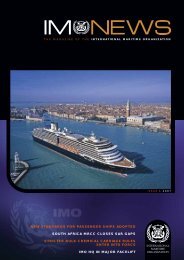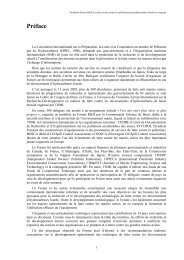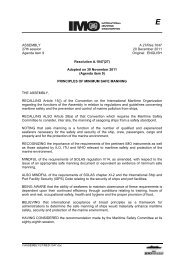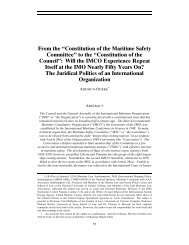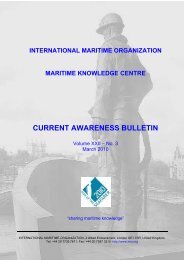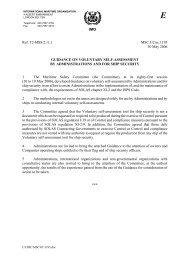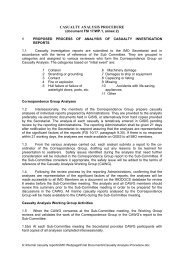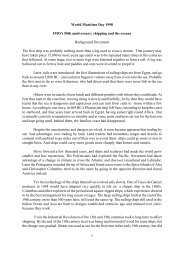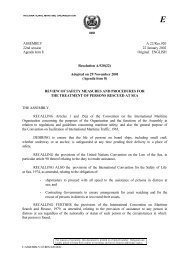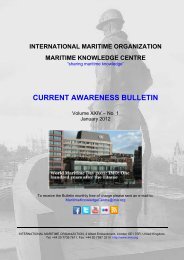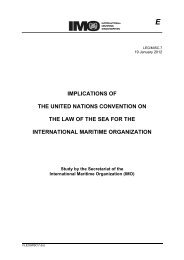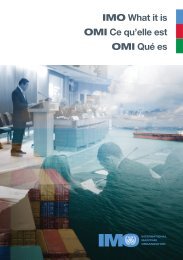Radioactive Waste Disposal at Sea: Public Ideas ... - IMO
Radioactive Waste Disposal at Sea: Public Ideas ... - IMO
Radioactive Waste Disposal at Sea: Public Ideas ... - IMO
You also want an ePaper? Increase the reach of your titles
YUMPU automatically turns print PDFs into web optimized ePapers that Google loves.
Explaining Regime Form<strong>at</strong>ion 127<br />
At Stockholm, prominent intern<strong>at</strong>ional scientists and ecologists invited<br />
by the Stockholm secretari<strong>at</strong> again <strong>at</strong>tacked the view of the oceans as pristine<br />
and indestructible. Heyerdahl, who had earlier appeared <strong>at</strong> congressional<br />
hearings and <strong>at</strong> meetings of the IWGMP, spoke in the distinguished<br />
lecture series held concurrent with the Stockholm conference. Using more<br />
dram<strong>at</strong>ic st<strong>at</strong>ements than he had on previous occasions, he said: “Quiet<br />
recently it has become more and more apparent th<strong>at</strong> some of the changes<br />
man is imposing on his original environment could be harmful to himself;<br />
in fact they could even lead to global disaster. . . . Since life on land is so<br />
utterly dependent on life in the sea, we can safely deduce th<strong>at</strong> a dead sea<br />
means a dead planet.” (Heyerdahl 1973, pp. 46, 49)<br />
Visible scientists were not just suppliers of scientific d<strong>at</strong>a; they also identified<br />
particular needs for and legitimized intern<strong>at</strong>ional environmental regul<strong>at</strong>ion.<br />
Maurice Strong had asked René Dubos and Barbara Ward to<br />
prepare the “conceptual framework” for the Stockholm conference. The<br />
study, published under the title Only One Earth: The Care and Maintenance<br />
of a Small Planet (Ward and Dubos 1972), was on sale <strong>at</strong> the time<br />
of the conference. 30 Strong had suggested th<strong>at</strong> the study identify areas in<br />
which there “exists a sufficient degree of consensus in the scientific community<br />
to permit us to act” (“St<strong>at</strong>ement,” in U.S. Sen<strong>at</strong>e, Intern<strong>at</strong>ional<br />
Environmental Science, p. 47). The timing could hardly have been better.<br />
This book was telling evidence of the environmental concern of the l<strong>at</strong>e<br />
1960s and the early 1970s.<br />
Strong and his secretari<strong>at</strong> acted as a forceful policy entrepreneur on<br />
behalf of the global environment. Mostly Strong, but also other members<br />
of the secretari<strong>at</strong>, met with represent<strong>at</strong>ives of the intern<strong>at</strong>ional scientific<br />
community, governments, the business community, and environmentalists<br />
in various combin<strong>at</strong>ions and forums around the world. 31 These meetings<br />
cre<strong>at</strong>ed opportunities to mobilize support by spreading environmental<br />
ideas, distributing promotion m<strong>at</strong>erial, and meeting with “friends.”<br />
Moreover, <strong>at</strong> these meetings the secretari<strong>at</strong> learned about the concerns<br />
and interests of governments and various stakeholders. This knowledge<br />
about the interests of governments and other stakeholders was important<br />
and most likely necessary in order to be able to provide influential policy<br />
entrepreneurship. In the early 1970s governments were not familiar with<br />
environmental issues, had little knowledge of the views, priorities, and



